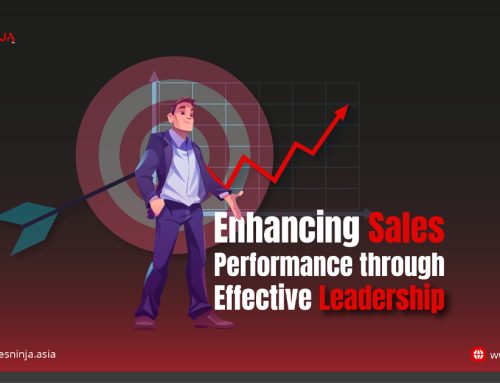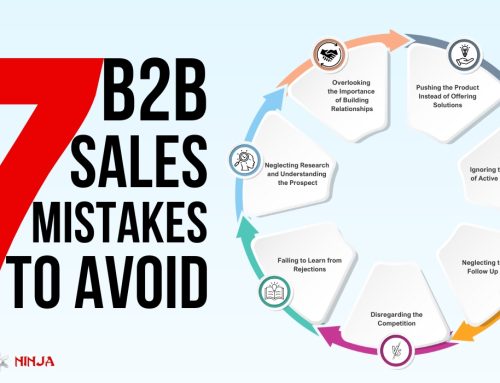2019 has seen major shifts in the sales industry. From watching the fall of retail giants to overhauls in sales processes thanks to technological advancements, changes have come fast and hard. The complexity of the sales industry is causing breakdowns all over the world, with buyers wanting more from sellers but not being clear about what they want, how they want it, and where they want it. It’s time to take a look at the major changes that have shifted the sales landscape in 2019, and ultimately, creating the framework for sales in 2020.
SALES IN 2019 WAS DIRECTED BY…
1. A New Generation –
When it was revealed that it was time to market and sell to Millennials, the sales industry reeled – how were they to suddenly cater to a whole new generation that, while also growing up with traditional media were more tech-savvy than their older counterparts? The solution that cropped up was social selling. Even if the term is unfamiliar, the practice has become a staple in many B2B and B2C companies. Social selling consists of narrowing down on prospects that suit the business (customarily, qualifying them) and then spending a lot of time building rapport with them and their network. This is done over social media – primarily via LinkedIn or Facebook. This allowed the salesforce to qualify, understand needs and pain points as well as form a connection with prospects in a shorter period and over multiple channels of communication – creating a more personalized sales experience.
2. The Integration of AI –
There is no question, as new technology emerges, the sales industry has to evolve to accommodate these modifications. Most prominent of all has been the advancements in replicating human functions with robots. We’ve seen business leaders like Jack Ma and Elon Musk hash it out over whether or not Artificial Intelligence would do more good than bad and if it would mean fewer jobs for people. There’s no denying it, technology has done good in creating more jobs but it has also taken away just as many. A recent study has shown that 45% of work can be completed using automation. The only differentiation, as highlighted by Jack Ma at the World AI Conference (WAIC), is that technology has no heart; it cannot yet process and understand natural language (body language, slang, intonation). One clear benefit of technology is its ability to align sales and marketing. This utilizes marketing to generate quality leads to pass to the sales team. This brings us to…
Technologies aligning sales & marketing which brings us to…
3. Data with a System –
…the mountain of data to sort through now that leads and prospects are generated by both marketing as well as sales. While tonnes of data is not new to sales, the constant influx of new systems to manage this data is close to revolutionary in 2019. What was once nice to have as an option has now become a necessity in any sales team, as people realize the importance of customer relationship management (CRM) systems in their day-to-day operations. This is a direct result of the change in customer interaction, with them needing a more personalized sales experience. The use of technology and sales tools like CRM has also shifted from being useful for sales teams to how to use ensure a more simple and direct customer journey.
HOW WILL THIS AFFECT SALES IN 2020?
1. It feels like it was just yesterday that Millennials took over, but it is already time to market to Gen Z.
If Millennials seemed complicated, Generation Z is even more so. Despite ranging from the early 20s to pre-teens, they will make up the biggest generation of consumers by 2020. This means that sales tactics need to suit the generation with the most reach to the rest of the world. Because they’ve grown up with the internet, they can find alternatives to whatever your sales team is pitching. The real solution here is to go from personalized selling to relevant selling. While Generation Z appreciates personalized selling, they are more concerned with ensuring they shop smart, get bang for their buck and, a plus would be if they had a good impact on the world while doing so. As most buyers these days have already progressed 70% through the decision-making process before they speak to a sales representative through the businesses’ online presence, you must have the right approach from the get-go.
Takeaway: Start focusing on relevancy in your sales pitches.
2. Start selling bottom up just as much as from the top down.
What this means is that there is a greater need to sell to lower-level management or directly to potential users of the product instead of just to key decision-makers and executives. The success rate of this strategy will differ from product to product; however, selling bottom-up will still wield benefits for B2B companies. This is because of the shift in company culture – where many companies are growing to be more employee-centric and employees, even the ones at the very bottom, are given more voice than ever before. By appealing to and pitching from the bottom up, you are targeting a wider market segment (i.e. common employees) who will be able to bring the matter up to their leader and further up from there. From introducing “freemium” benefits to simple free trials, there are
Takeaway: Don’t disregard lower-level employees. Start small and work your way up – it might be more impactful than an all-out rejection from someone too busy to listen to you.
3. Automation without coaching is like a good ship without a capable crew.
Technology is confusing. New features are introduced on a daily and these features include links to other software, sites, or tech gadgets that are integrated (omnichannel sales). However, even with the fancy, expensive software, there is no guarantee that your results will improve. This is because you will need to upskill your talent alongside the tech upgrades. An example would be the Marketing team using Google Ads to boost your organic reach and branding to create a foreseeable increase in leads for the sales team. Google Ads is constantly evolving and is no easy feat for someone without exposure and training on how to create effective ads at a minimal cost.
Takeaway: Upskill yourself and your employees alongside the technological upgrades. Invest in them and you get a more effective and loyal team.





Leave A Comment